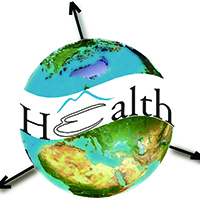Changes in geographic clustering of post-traumatic stress disorder and post-traumatic growth seven years after an earthquake in Cauquenes, Chile

All claims expressed in this article are solely those of the authors and do not necessarily represent those of their affiliated organizations, or those of the publisher, the editors and the reviewers. Any product that may be evaluated in this article or claim that may be made by its manufacturer is not guaranteed or endorsed by the publisher.
Authors
Recent findings indicate that both disruptive Post-Traumatic Stress Disorder (PTSD) and healthy Post-Traumatic Growth (PTG) responses have some spatial distribution depending on where they are measured and the different degrees of exposure that people may have to a critical event (e.g., earthquake). Less is known about how these responses change as a function of space and time after these events. The objective of this study was to enter deeper into this relationship analysing how PTSD and PTG responses vary in their spatial distribution 6 and 7 years after an earthquake (such as the one that occurred on 27 February, 2010 in Cauquenes City, Chile). Spatial analyses based on Geographic Information Systems (GIS) were performed to detect global and local geographic clustering. Investigating 171 (2016) and 106 (2017) randomly selected adults from Cauquenes, we demonstrated that 7 years after the event only 4 variables were spatially clustered, i.e. personal mental strength, interpersonal relations, new possibilities and appreciation of life), all of them PTG dimensions; This result contrasted with the situation the previous year (2016), when 7 variables were clustered (total PTG, spiritual change, new possibilities, appreciation of life, PTSD symptoms, PTSD reactions and PTSD in total). The spatial identifications found could facilitate the comparison of mental health conditions in populations and the impact of recovery programmes in communities exposed to disasters.
How to Cite

This work is licensed under a Creative Commons Attribution-NonCommercial 4.0 International License.
PAGEPress has chosen to apply the Creative Commons Attribution NonCommercial 4.0 International License (CC BY-NC 4.0) to all manuscripts to be published.













